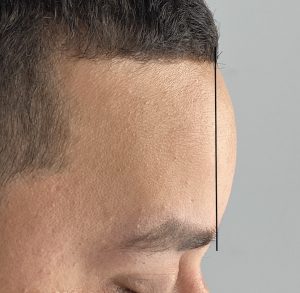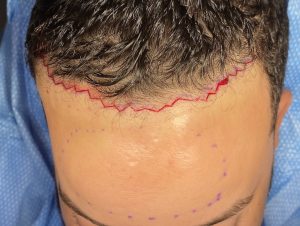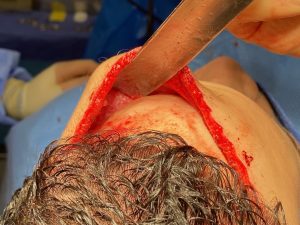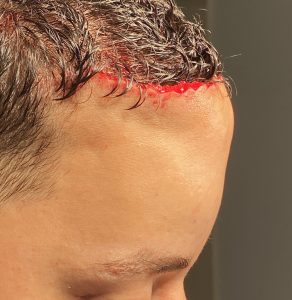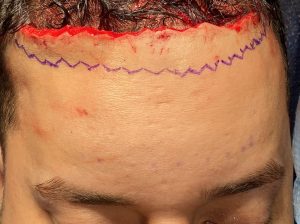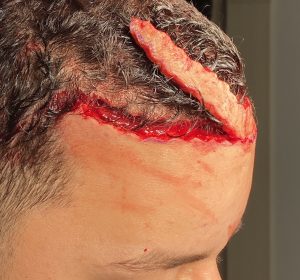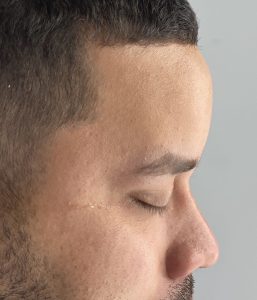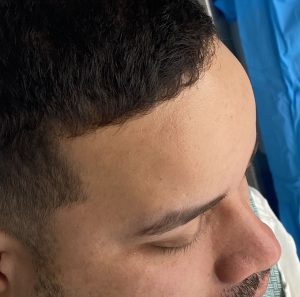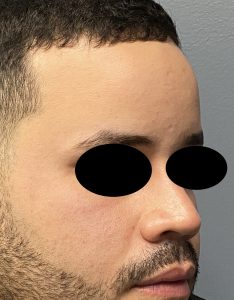Background: The forehead is an important facial feature for both men and women. There are specific gender differences in their shapes with the forehead in men being more retroclined, broader and with more visible temporal lines. The male forehead can also be higher due to a recessed frontal hairline or no hairline at all. The higher the hairline the more of the upper forehead that is seen particularly the transition of the forehead as it turns onto the top of the skull.
With a more posteriorly positioned frontal hairline the visible shape of the forehead is more fully exposed. This can make the upper forehead appear too prominent or has frontal bossing when it is just the forehead-skull transition that is being seen. But there are instances when frontal bossing is real and most commonly occurs when the overall skull shape is more narrow. Decreased bitemporal width will developmentally make the frontal bone grow with an outward bulge. This is most dramatically seen in the scaphocephalic head shape from various forms of sagittal craniosynostosis. But various forms of craniosynostosis not withstanding, the more narrow forehead often leads to a protruding appearance. A recessed frontal hairline only magnifies the bossing appearance.
When treating frontal bossing in any patient through bone reduction the incision location is very important. Good access is needed to do the side to side burring that is required to reduce it. The incision from a frontal hairline advancement provides optional access and is the most ideal incision to use for any form of forehead bony reduction…if the patient has good hair density to use it and is an otherwise good candidate for the procedure .
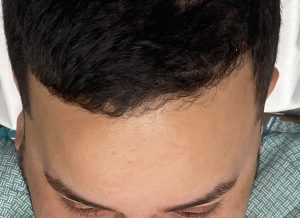
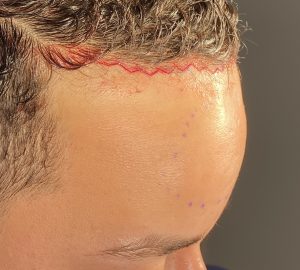
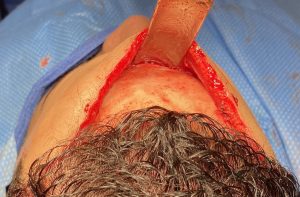
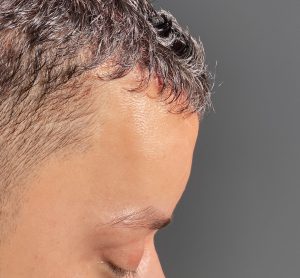


Case Highlights:
1) Forehead reduction in men usually refers to eliminating bony prominences or frontal bossing.
2) Men can also undergo frontal hairline advancement but need to have adequate hair density of the advancing edge to do so.
3) A combined bony and soft tissue reduction of the forehead is synergistic as the advanced hairline helps decrease upper forehead bony show.
Dr. Barry Eppley
Indianapolis, Indiana




